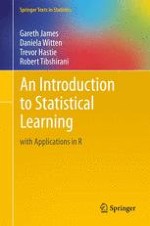2013 | OriginalPaper | Buchkapitel
7. Moving Beyond Linearity
verfasst von : Gareth James, Daniela Witten, Trevor Hastie, Robert Tibshirani
Erschienen in: An Introduction to Statistical Learning
Verlag: Springer New York
Aktivieren Sie unsere intelligente Suche, um passende Fachinhalte oder Patente zu finden.
Wählen Sie Textabschnitte aus um mit Künstlicher Intelligenz passenden Patente zu finden. powered by
Markieren Sie Textabschnitte, um KI-gestützt weitere passende Inhalte zu finden. powered by
